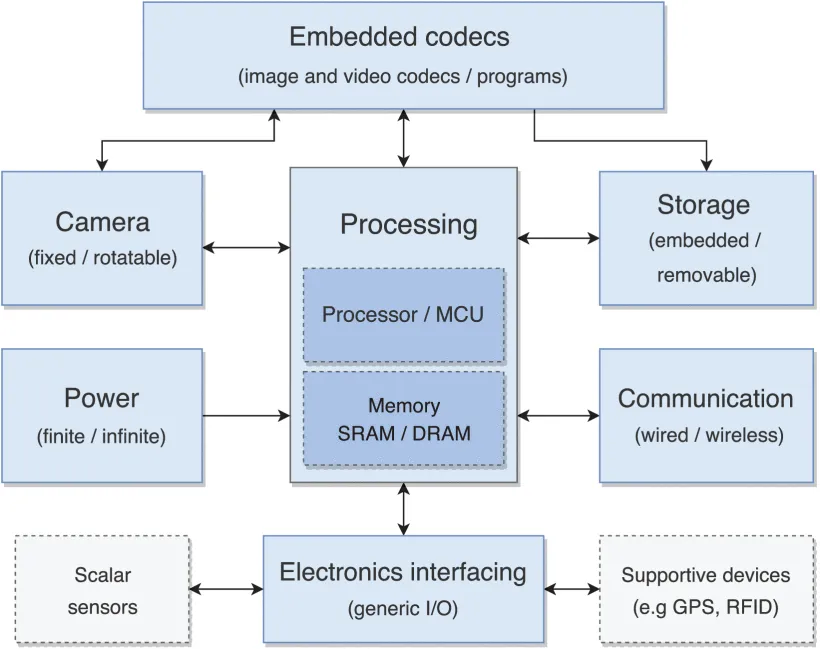Visual Sensors Hardware Platforms: A Review
IoT based services, Smart City applications, Cyber-physical systems etc. have generated huge demand of and understanding for sensors and sensors based services. The advent of tiny and affordable sensor devices and low-cost powerful cameras have opened up immense possibilities for monitoring, control, and management applications, which eventually contributed to the establishment of the Internet of Things (IoT).
Any WSN application is developed around the type of sensors, protocols on which these sensors interact and the communication topology for establishing the network of all these sensors. Selection of sensors is done based on the types of data that the application requires. Visual sensor networks are a practical solution to the complex monitoring scenario and play a central role in surveillance services in a smart city application and autonomous vehicular networks.
A Wireless Visual Sensor Network(WVSN) platform is a system composed of at least a camera, which is its backbone. The image taken by this sensor then will be processed for noise filtering and adequate compression. Therefore a microprocessor unit is required. The final image either is saved locally (for this we require a memory card) or transmitted in real-time (for this we need a communication port based on any of the WiFi, Bluetooth, ZigBee depending upon the application). Visual data are more byte hungry, complex in capturing and therefore such system consumes huge energy. So energy consumption optimization becomes a real challenge for application developers. The capturing, processing, storing and sending of visual data determine the performance of the WVSN. It has evolved quite dramatically in the last two decades. Just to give an example, its processor architecture has gone from 8 bits to 32 bits, operating at few MHz to 1 GHz with 1 GB RAM, FPGA and flash memory features. These systems do have TinyOS as their dedicated operating system.
MICA, Imote, Telos are some of the popular platforms which came in the market in the beginning of 21stcentury which were designed to achieve high energy efficiency at low cost. But since a visual sensor platform requires high processing power, later Cyclops, MeshEye, Panoptes were introduced. But these did not have video streaming or capturing features.
Recently many general purpose hardware boards, such as Arduino, BeagleBone, Raspberry-Pi etc., came in the market and became the game-changers. These created an ecosystem of open-source development platform for sensor networks including WVSN. Do-It-Yourself (DIY) projects brought sensor network based application development up to the classrooms and living rooms of the geeks.
The current requirements of a WVSN platform are to have high resolution camera, excellent compression factor, highly configurable, easier to be programmed, energy efficient and low cost. Hence this generation of visual sensor systems are developed as a mini computer or even as a System-on-Chip. ESP8266 and ESP32 are examples of this generation. These have revolutionized design of visual sensing IoT applications. OV2640 camera can directly be connected to the ESP32-CAM interface. The time has come when these boards would also enable AI-ML algorithms-on-board for high end processing of these visual data, still or video, to provide on-demand real-time analysis also.




